Spine Gourd Farming
Spine gourd (Momordica dioica), also known as teasel gourd or kantola, is a nutritious and high-value vegetable crop gaining popularity for its health benefits and market demand. Cultivated as a perennial vine, it thrives well under tropical and subtropical conditions, producing consistent yields for 4–5 years once established.
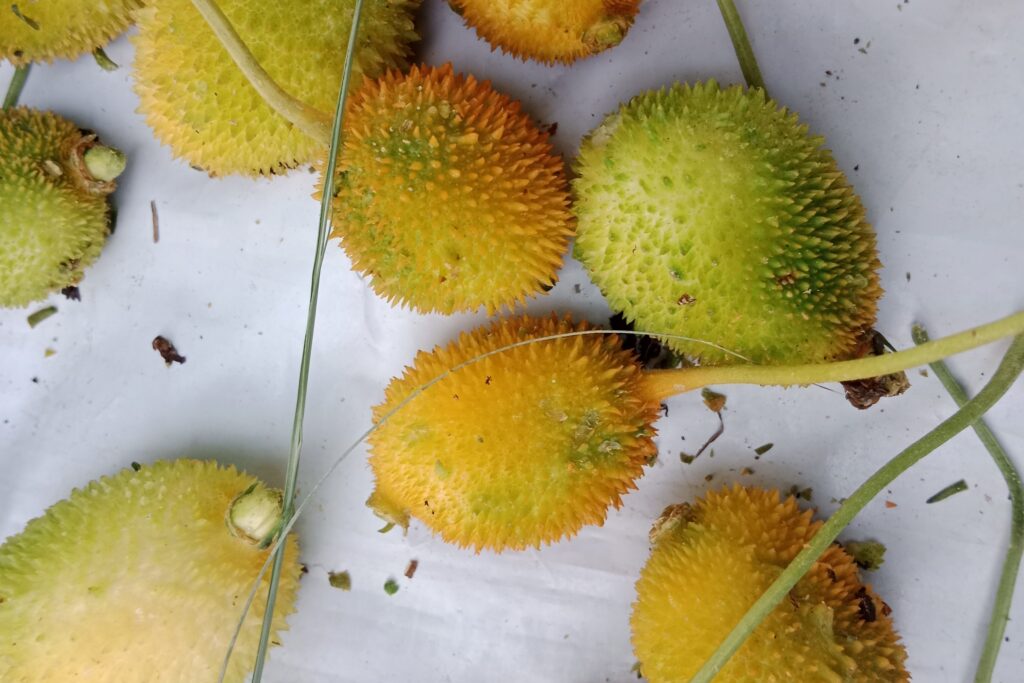
Although it requires higher initial investment for planting materials and trellis support, spine gourd farming offers strong long-term profitability through its rising yields in subsequent years, making it an attractive option for commercial vegetable growers.
An analysis of spine gourd farming profit per acre reveals a compelling financial narrative. This venture typically involves a significant initial investment, approximately NRs. 72,000 in the first year, which—coupled with low initial yields—results in an expected first-year loss of around NRs. 52,000, a common scenario for perennial vine crops.
However, persistence pays off as the operation reaches its break-even point by the third year. The third and fourth years mark the peak of production and profitability, with the third year alone generating the highest annual return of NRs. 67,500.
While yields naturally begin to decline after this peak, the total net profit over a five-year cycle stands at a robust NRs. 130,500, proving spine gourd farming to be a sustainable and profitable long-term investment despite the initial financial setback.
Land Preparation
For successful spine gourd cultivation, the land should first be deeply ploughed 2–3 times to a depth of 20–30 cm to achieve a fine tilth, which helps break soil clods, improve aeration, and facilitate better root penetration.
Once ploughing is complete, the field should be leveled evenly to ensure uniform water distribution and to prevent waterlogging in low-lying areas. Finally, basins or beds should be prepared around the proposed pit locations so that irrigation water can be retained and directed effectively to the root zone, supporting healthy plant establishment and growth.
Soil Type
Spine gourd grows best in well-drained sandy loam to loamy soils that are rich in organic matter, with an ideal pH range of 6.0 to 6.5, making it suitable for slightly acidic to neutral conditions. While the crop shows moderate tolerance to soil acidity, proper drainage is essential, as waterlogged conditions can severely affect growth by causing root rot and promoting fungal diseases.
Climatic Requirements
Spine gourd is a warm-weather vegetable that flourishes in tropical and subtropical regions. It grows best when temperatures remain between 25°C and 30°C, but it is vulnerable to frost and cannot withstand prolonged cold conditions. The crop performs well in areas receiving around 1500 mm of annual rainfall, provided that excess water does not accumulate, as waterlogging is harmful. For healthy growth and good yields, proper drainage and sufficient exposure to sunlight are essential.
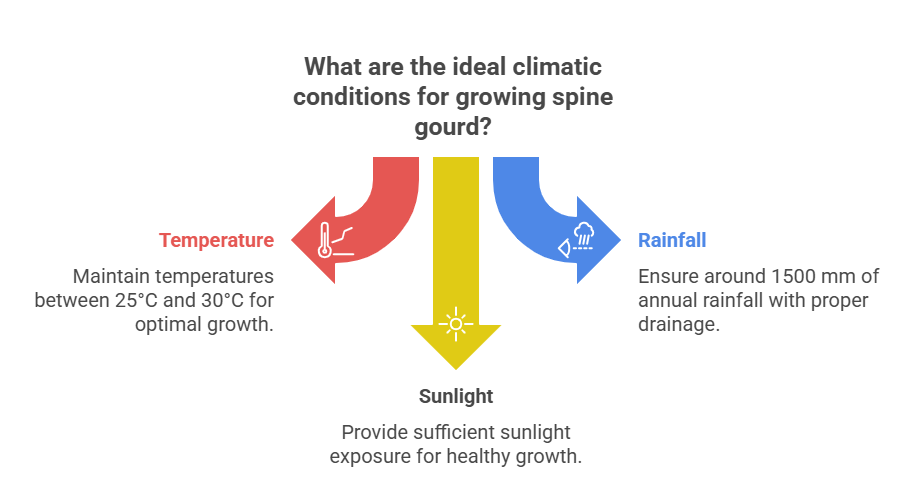
Major Cultivars
Unlike many commercial crops, spine gourd does not have highly standardized hybrid varieties, and selection is generally based on local preferences such as fruit size, spine density, and color. The most commonly cultivated type is the green-spined variety, while the white-spined form is less common and often considered a variant. Farmers typically rely on seeds collected from locally adapted, high-yielding, and disease-free plants for cultivation.
Propagation
Spine gourd is mainly propagated through its tuberous roots for commercial cultivation, as this method is more reliable, ensures a higher proportion of female plants (which produce fruits), and allows for earlier harvesting compared to seed propagation.
Seed propagation is less common because it results in a 50:50 male-to-female ratio, delayed fruiting of 2–3 years, and variability in yield, though it is occasionally used for developing new planting material. Since spine gourd is dioecious in nature, about 10% of male plants are necessary in the field to ensure proper pollination and good fruit set.
Seed Rate per Acre
For spine gourd cultivation, around 1,600 to 1,800 tuber pieces with at least one healthy bud or eye are required per acre when using tuber planting, while seed planting requires approximately 1.5 to 2 kg of seeds per acre to raise seedlings for transplanting.
Planting
a). Planting Season
The ideal time for planting spine gourd tuber pieces is at the onset of the monsoon during June–July, while in areas with assured irrigation, planting can also be successfully carried out in the spring season around February–March.
b). Planting Direction
When planting spine gourd, the tuber pieces should always be placed with the bud facing upwards to ensure proper sprouting and healthy plant establishment.
c). Spacing
A spacing of 2 m x 2 m is recommended. This allows adequate space for the vines to spread and for inter-cultural operations.
d). Pit Preparation
Pits of size 30 cm x 30 cm x 30 cm are dug at the recommended spacing.
e). Planting Method
Each pit is filled with a mixture of topsoil and 10-15 kg of well-rotted FYM or compost. 1-2 tuber pieces are placed in the center of each pit and covered lightly with soil.
f). Number of Plants per Acre
With 2m x 2m spacing, there will be approximately 1,011 plants per acre.
Intercropping
Because spine gourd is a perennial creeper that grows slowly at the beginning and requires wide spacing, intercropping proves advantageous. Farmers can cultivate fast-maturing crops such as okra, radish, cabbage, cauliflower, leafy greens, or pulses alongside it during the first three to four months. This practice not only offers supplementary income but also assists in suppressing weed growth during the early stages of the main crop.
Irrigation
Spine gourd requires immediate irrigation after planting, with frequent light watering until the plants are well established. Once the vines are established, irrigation can be reduced to about once a week, depending on soil moisture and weather conditions. Maintaining adequate water during flowering and fruit development is critical, as moisture stress at these stages can significantly reduce yield. During the winter dormant period, irrigation frequency should be further reduced.
Fertilizer and Manure
Spine gourd grows well with the application of organic manures, which improve soil fertility and support healthy vine and fruit development.
| Application Type | Timing | Material & Quantity (per plant) | Remarks |
| Basal Dose | At planting (per pit) | • 10-15 kg FYM/Compost • 100 gm Neem Cake • 50 gm Single Super Phosphate (SSP) • 50 gm Trichoderma viride | Mix thoroughly with the soil while preparing the planting pit. |
| Top Dressing 1 | 30 days after planting | • 50 gm Urea • 50 gm Muriate of Potash (MOP) | Apply in a ring around the plant base and mix lightly into the soil, followed by irrigation. |
| Top Dressing 2 | At flowering stage | • 50 gm Urea • 50 gm Muriate of Potash (MOP) | Apply in a ring around the plant base and mix lightly into the soil, followed by irrigation. |
| Annual Maintenance | Each spring season (subsequent years) | • 10-15 kg FYM + Recommended chemical fertilizers | Apply the full recommended dose of fertilizers (as per soil test) along with FYM. |
Weed Control
During the initial growth stage of spine gourd, regular hand weeding or hoeing is necessary until the vines cover the ground, with 2–3 weedings in the first few months being crucial. Additionally, mulching around the base of the plants using organic materials such as paddy straw, dried leaves, or black plastic mulch is highly effective in suppressing weeds and conserving soil moisture.
Inter Culture Operation
Training (Trellising)
For better growth and higher yields, spine gourd vines need a sturdy support system. Using trellises helps lift the fruits away from the soil, which minimizes rotting, enhances airflow, lowers disease incidence, and simplifies harvesting. A bower or pandal structure about two meters tall is generally preferred for managing the long, spreading vines.
Pruning
After harvesting, usually in the winter months, the crop enters dormancy. At this stage, removing old, diseased, or dried vines is essential to stimulate new, healthy shoots, ensuring vigorous growth and better productivity in the following season.
Flowering and Fruit Management
Flowering
Spine gourd is dioecious, meaning that male and female flowers grow on separate plants. To achieve good fruit set, maintaining about one male plant for every nine female plants is considered ideal. When propagation is done through tubers, choosing planting material from proven high-yielding female plants can significantly enhance productivity.
Pollination
Bees and other insects serve as the main pollinators of spine gourd. Ensuring a strong population of these natural pollinators in the field is important, as successful pollination directly affects both fruit set and yield.
Fruit Thinning
Although thinning is not a routine practice in spine gourd cultivation, removing poorly shaped, diseased, or damaged fruits allows the plant to channel more energy into producing healthy, uniform fruits, leading to improved quality and harvest outcomes.
Pest and Disease Management
Common Pests
Fruit Fly
Among the pests affecting spine gourd, fruit fly is the most damaging, as it targets developing fruits and leads to heavy yield losses. Control practices include installing pheromone traps (about 10 per acre), covering young fruits with paper or polythene bags to block egg-laying, spraying neem-based formulations such as azadirachtin (0.03–0.05%), and removing as well as destroying any infested fruits to keep populations under check.
Red Pumpkin Beetle
This insect feeds mainly on leaves and flowers, thereby reducing photosynthesis and flower formation. Management options include applying wood ash or diatomaceous earth directly on plants and, if needed, using carbaryl dust at 2–3 grams per square meter.
Aphids and Whiteflies
These insects suck plant sap, weakening growth and also serving as carriers of viral infections. They can be managed by setting up yellow sticky traps to monitor and suppress populations, and by spraying neem oil (2–3 ml per liter of water) or a mild soap solution (1–2%) on affected plants.
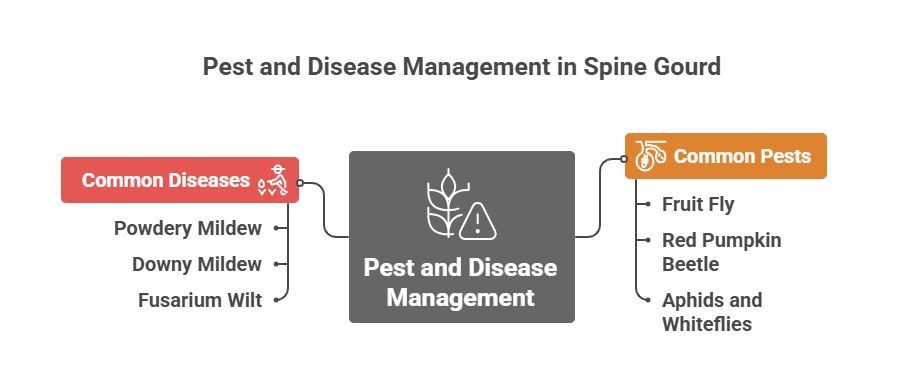
Common Diseases
Powdery Mildew
This fungal disease is recognized by white, powder-like growth on the leaf surface, which lowers photosynthetic activity and weakens the crop. Management can be achieved by spraying sulfur (2–3 g per liter of water) or Dinocap (0.05%) on affected plants. Maintaining good airflow through proper spacing and timely pruning also reduces disease pressure.
Downy Mildew
Infected plants show yellow, angular lesions on the top of the leaves, often accompanied by gray fungal growth beneath. To control the disease, sprays of Mancozeb (2.5 g per liter of water) or Chlorothalonil (2 g per liter) are recommended at intervals of 7–10 days during favorable weather.
Fusarium Wilt
This soil-borne disease leads to yellowing, progressive wilting, and eventual death of vines. Preventive measures include planting healthy, disease-free tubers, rotating crops with non-host species, and solarizing the soil for 4–6 weeks before planting to lower fungal populations. The use of resistant planting material and practicing good field sanitation further reduce risks.
Harvesting
The first harvest of spine gourd is usually ready about 3 to 4 months after planting the tubers. Fruits should be collected while still young—around 10 to 15 days old—when they remain green, tender, firm, and covered with soft spines. If left to mature, they turn orange-red, become fibrous, and develop a bitter taste.
During the peak harvest period, fruits are gathered every 4 to 5 days, and frequent picking encourages continuous flowering and fruiting. For best results, harvesting should be done with a sharp knife or secateurs, leaving a small stalk attached; pulling or twisting is discouraged to avoid harming the vines.
Yield
A well-managed tuber-propagated crop grown using the pandal system can produce 3,000 to 4,000 kg (3–4 tonnes) of fruits per acre in the first year. Being a perennial crop, yields increase in the second and third years, potentially reaching 6,000 to 8,000 kg per acre, and the plants can remain productive for 4–5 years with proper management. In contrast, seed-propagated crops have significantly lower yields, averaging around 1–1.5 tonnes per acre in the first year of fruiting.
Cost of Investment per Acre for Spine gourd Farming
| S.N. | Categories | Cost for Investment (NRs.) |
| 1 | Land Preparation | 15,000 |
| 2 | Planting materials | 3,000 |
| 3 | Planting | 2,000 |
| 4 | Trellis Support | 5,000 |
| 5 | Fertilizers and Manure | 7,000 |
| 6 | Irrigation | 6,000 |
| 7 | Weed Control (pre & post-emergence) | 2,000 |
| 8 | Pest & Disease Control | 4,000 |
| 9 | Harvesting | 3,000 |
| 10 | Miscellaneous Costs | 5,000 |
| Total Initial Investment Cost | 52,000 |
Annual Maintenance Cost per Acre for Spine Gourd Farming
The annual maintenance cost for spine gourd farming is estimated at around NRs. 20,000 per acre each year. This recurring expenditure generally covers essential farming operations such as irrigation, application of fertilizers and manure, weed management, pest and disease control, routine field upkeep, and labor requirements for crop care and harvesting.
Unlike the initial establishment cost, which is relatively high, the yearly maintenance cost remains moderate and ensures sustained crop productivity and profitability over the subsequent years of cultivation.
Income per Acre for Spine Gourd Farming
| Year | Estimated Yield (Kg) | Market Price (NRs/Kg) | Total Income (NRs.) |
| 1st Year | 800 | 25 | 20,000 |
| 2nd Year | 2,000 | 25 | 50,000 |
| 3rd Year | 3,500 | 25 | 87,500 |
| 4th Year | 3,000 | 25 | 75,000 |
| 5th Year | 2,000 | 25 | 50,000 |
| Total | 10,300 | 282,500 |
Analysis of Spine Gourd Farming Profit Per Acre
| Year | Total Income (NRs.) | Expenses (NRs.) | Net Profit / Loss (NRs.) |
| 1st | 20,000 | 52,000 | -32,000 (Loss) |
| 2nd | 50,000 | 20,000 | +30,000 (Profit) |
| 3rd | 87,500 | 20,000 | +67,500 (Profit) |
| 4th | 75,000 | 20,000 | +55,000 (Profit) |
| 5th | 50,000 | 20,000 | +30,000 (Profit) |
| Total (5 Years) | 2,82,500 | 1,32,000 | +1,50,500 (Net Profit) |
Spine gourd farming involves a high initial investment of around NRs. 72,000 in the first year, when yields are still low, resulting in a loss of about NRs. 52,000—a common scenario for perennial vine crops. However, the farm reaches its break-even point in the third year, as the earlier losses are offset by higher yields and profits.
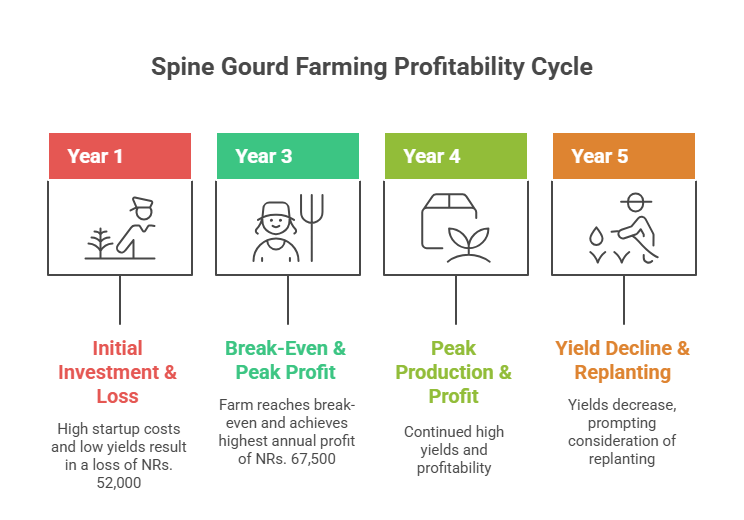
The third and fourth years mark the peak of production and profitability, with the third year generating the highest annual return of NRs. 67,500. As expected with perennial plants, yields begin to decline after reaching their peak, evident in the fourth and fifth years, prompting many farmers to consider replanting after 4–5 years.
Nevertheless, over the five-year cycle, the total net profit stands at a strong NRs. 130,500, proving that spine gourd farming is a profitable and sustainable long-term investment despite the initial setbacks.
Also Read: Sponge gourd Farming Profit Per Acre
Also Read: Pointed gourd farming Profit per Acre
Sources
Food and Agriculture Organization (FAO)
University of California Agriculture & Natural Resources (UC ANR)
European Plant Protection Organization (EPPO)
Punjab Agricultural University (PAU)
Tamil Nadu Agriculture University (TNAU) – Agritech portal
Indian Council of Agricultural Research (ICAR)
Nepal Agricultural Research Council (NARC)
U.S. Department of Agriculture (USDA).
Ministry of Agriculture and Livestock Development (Nepal)
Disclaimer: This crop farming profits assume optimal conditions. Actual results may vary depending on climate, market prices, and farm management practices.

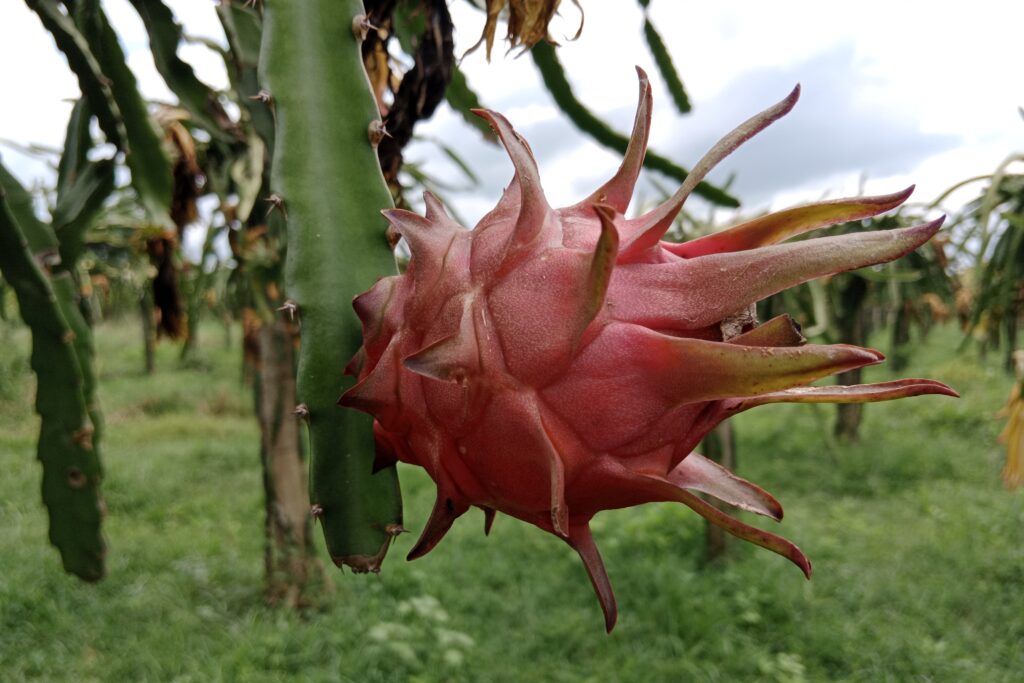
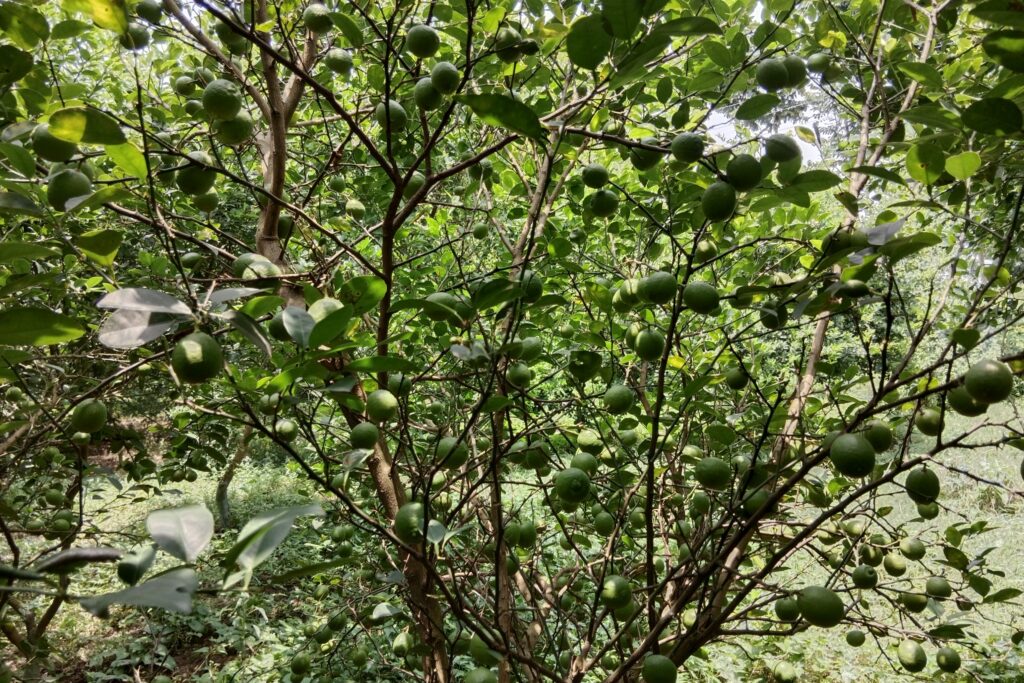
Pingback: Ridge Gourd Farming Profit Per Acre -